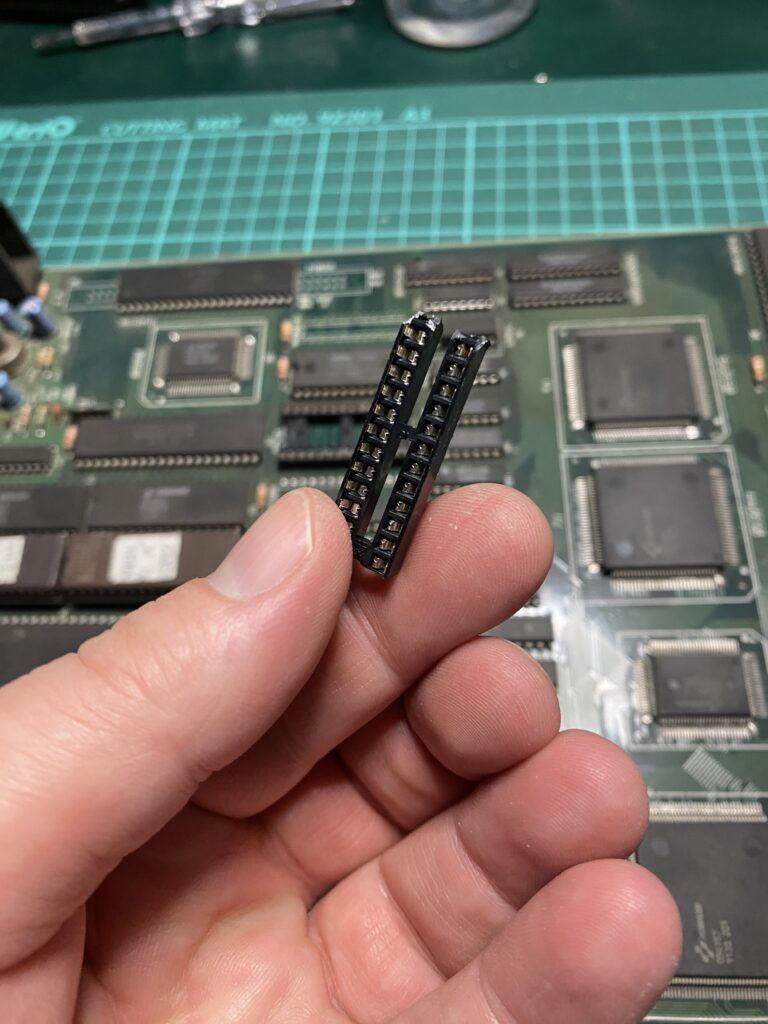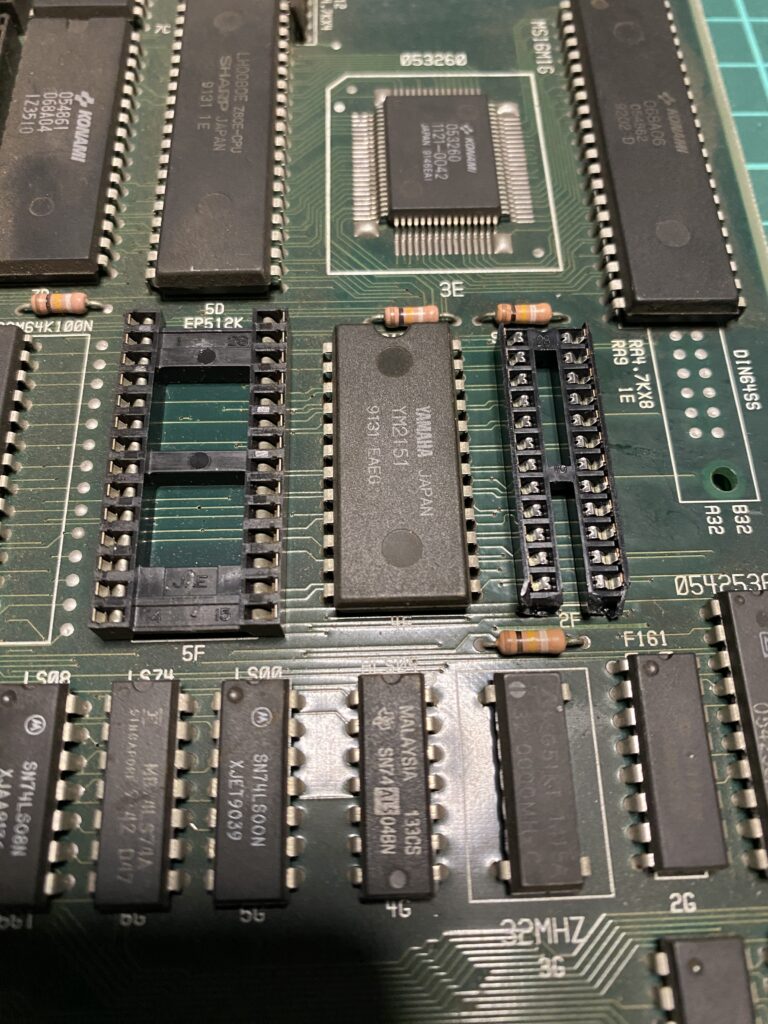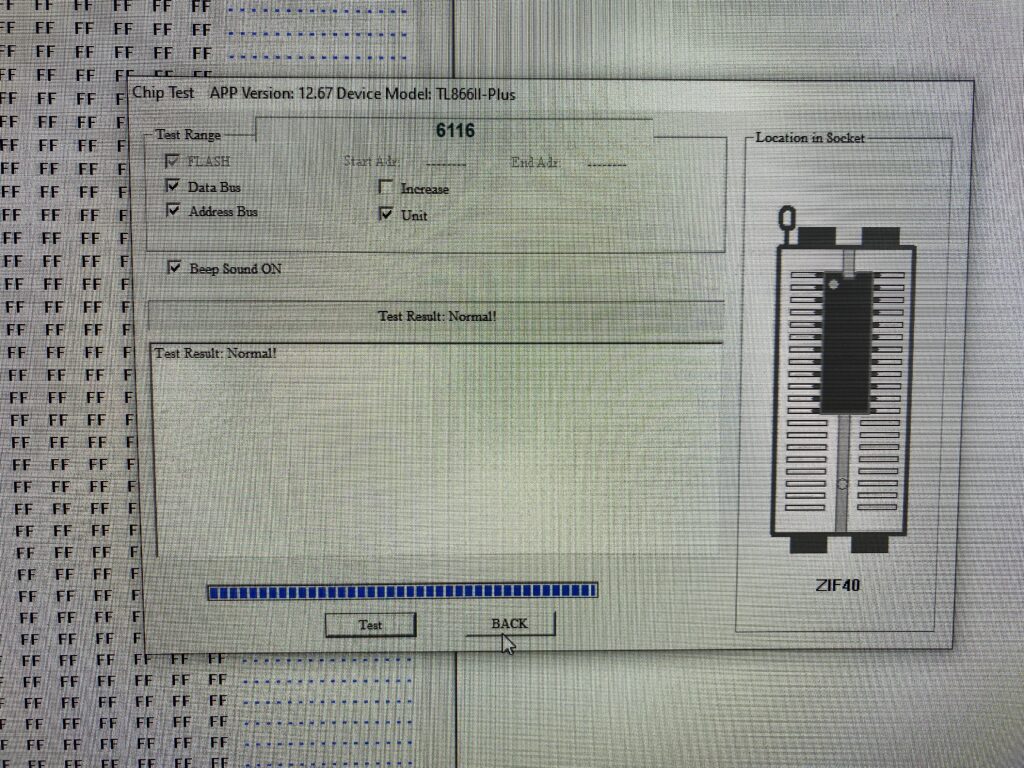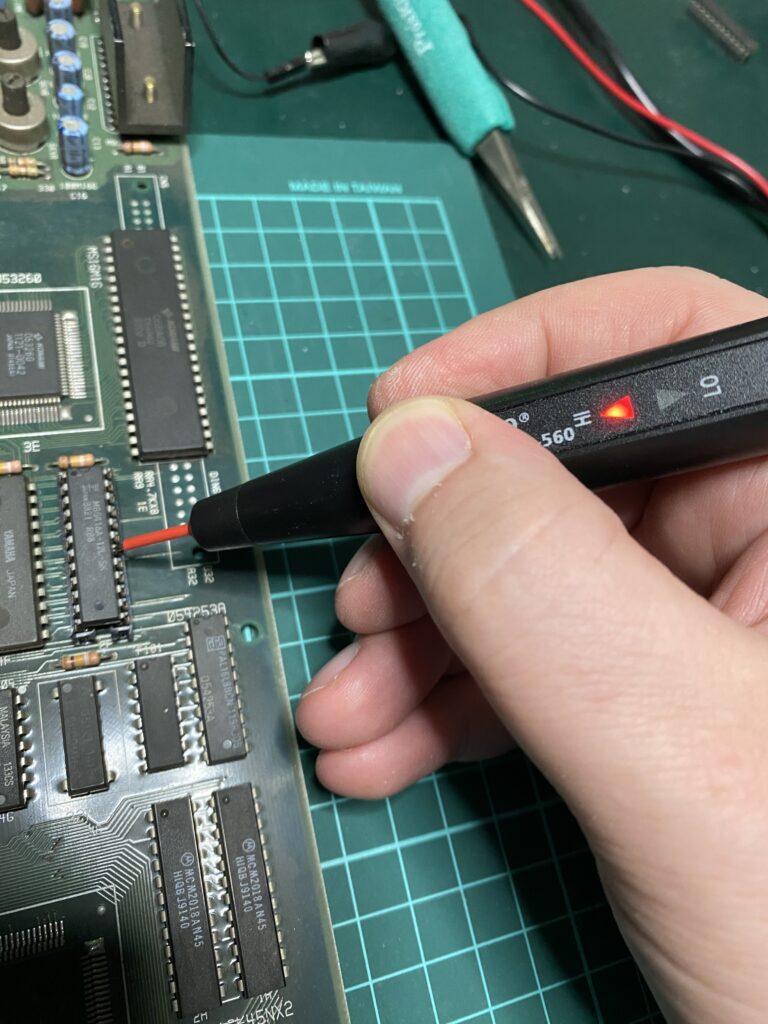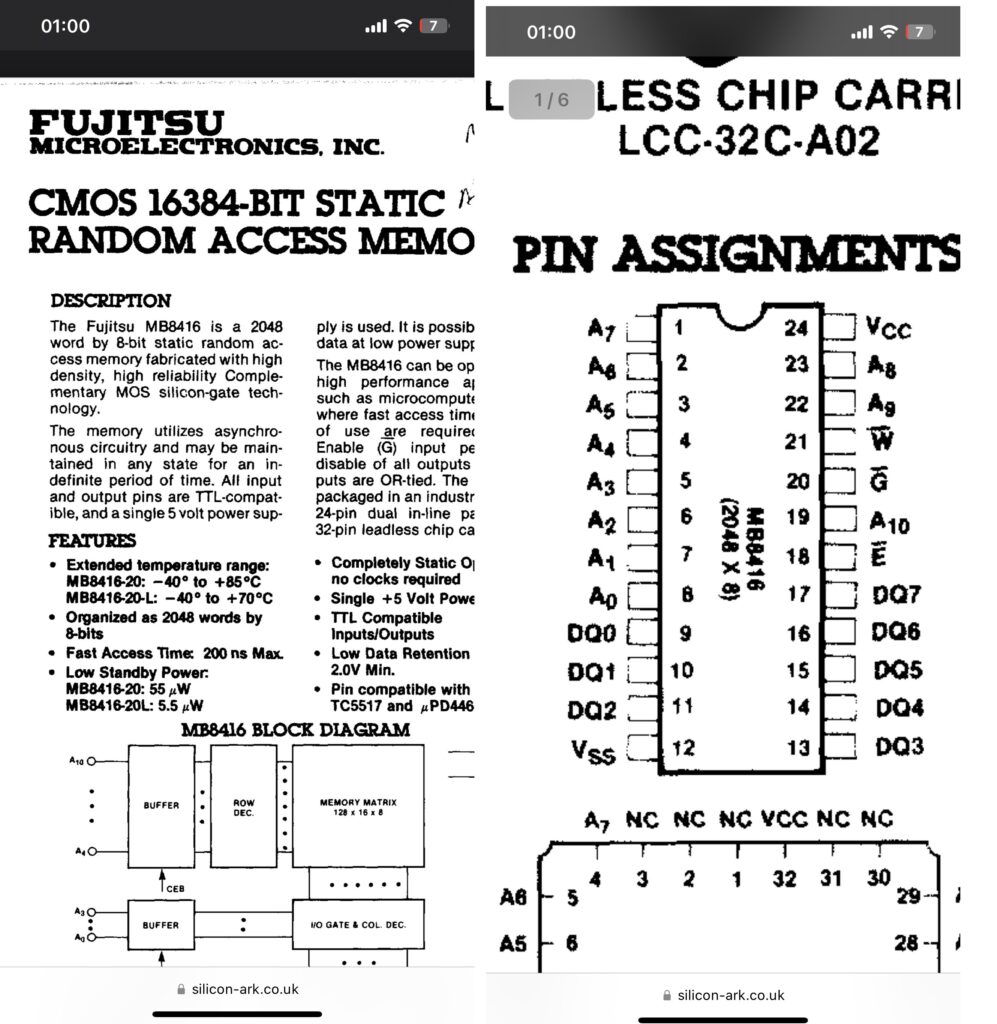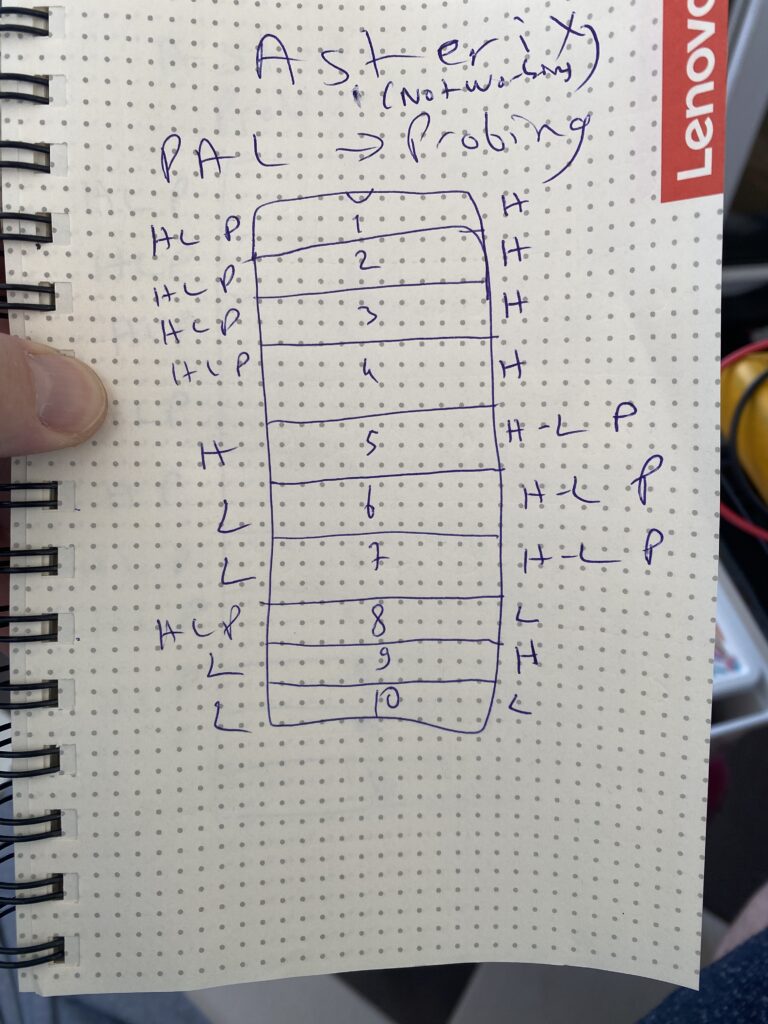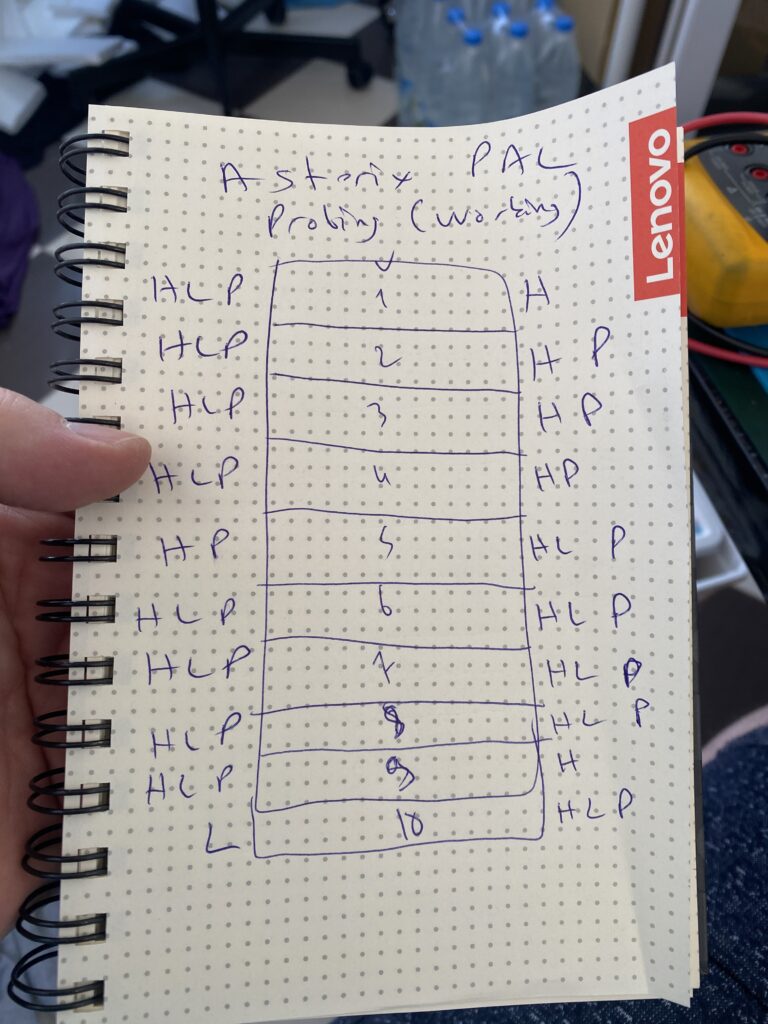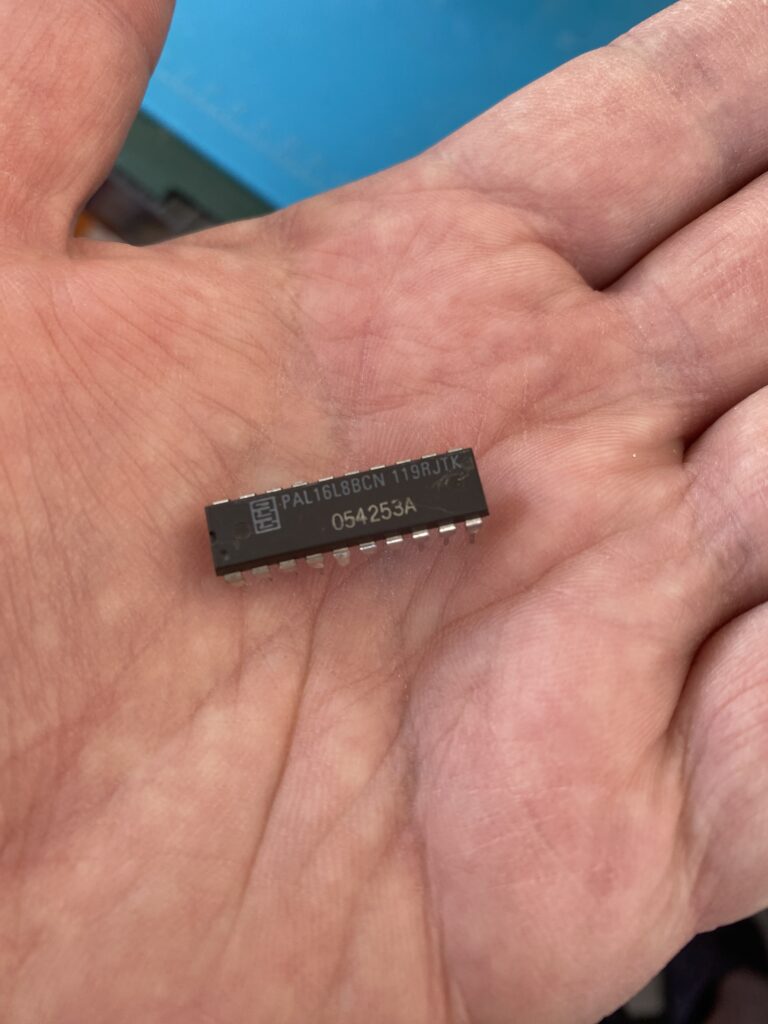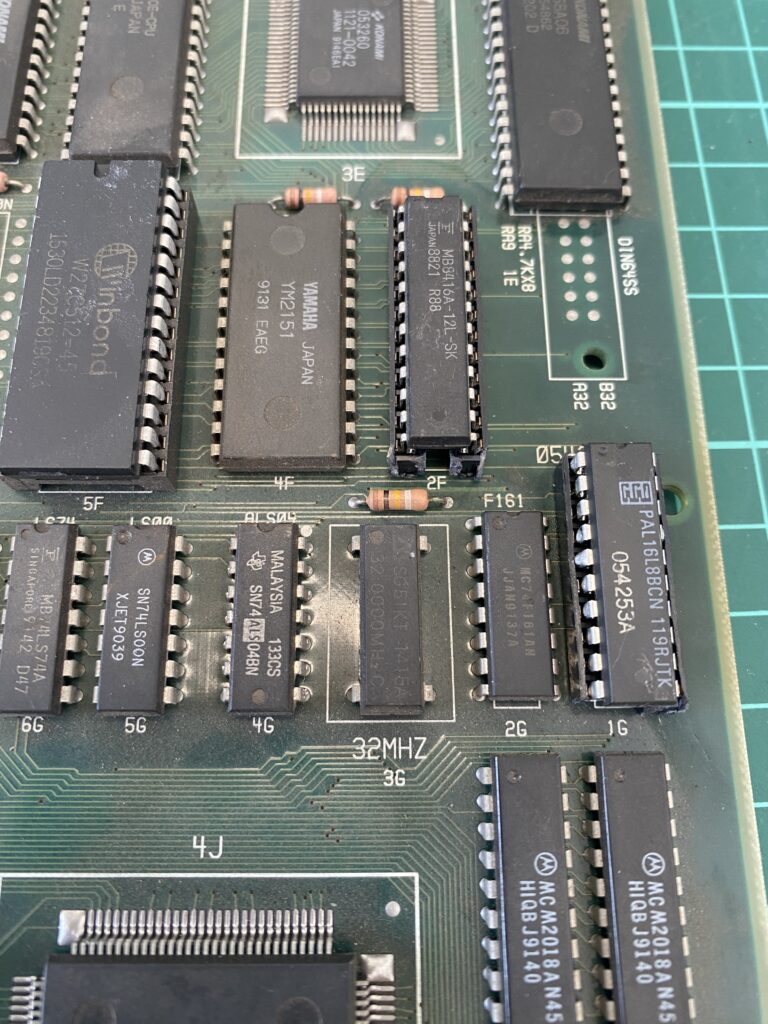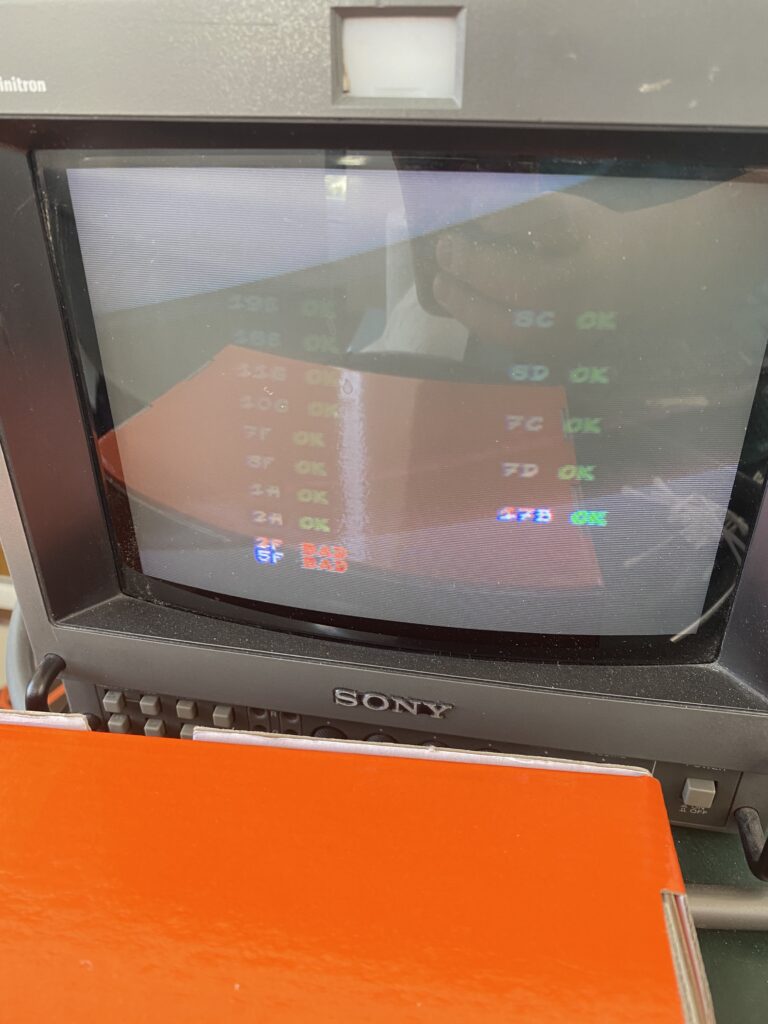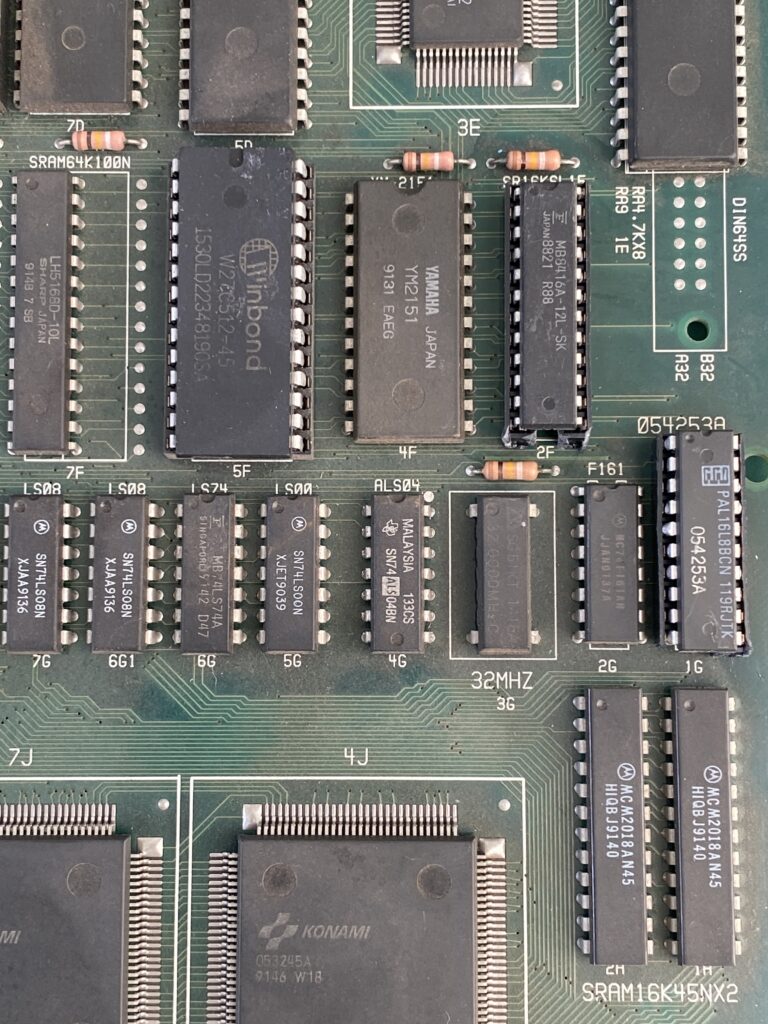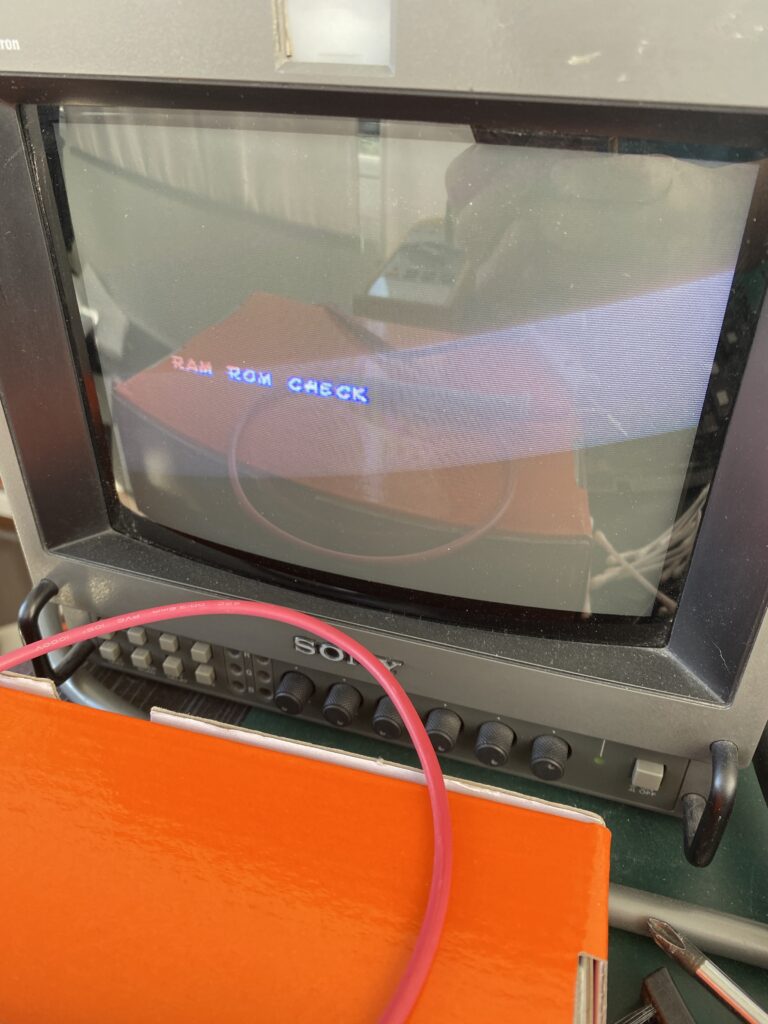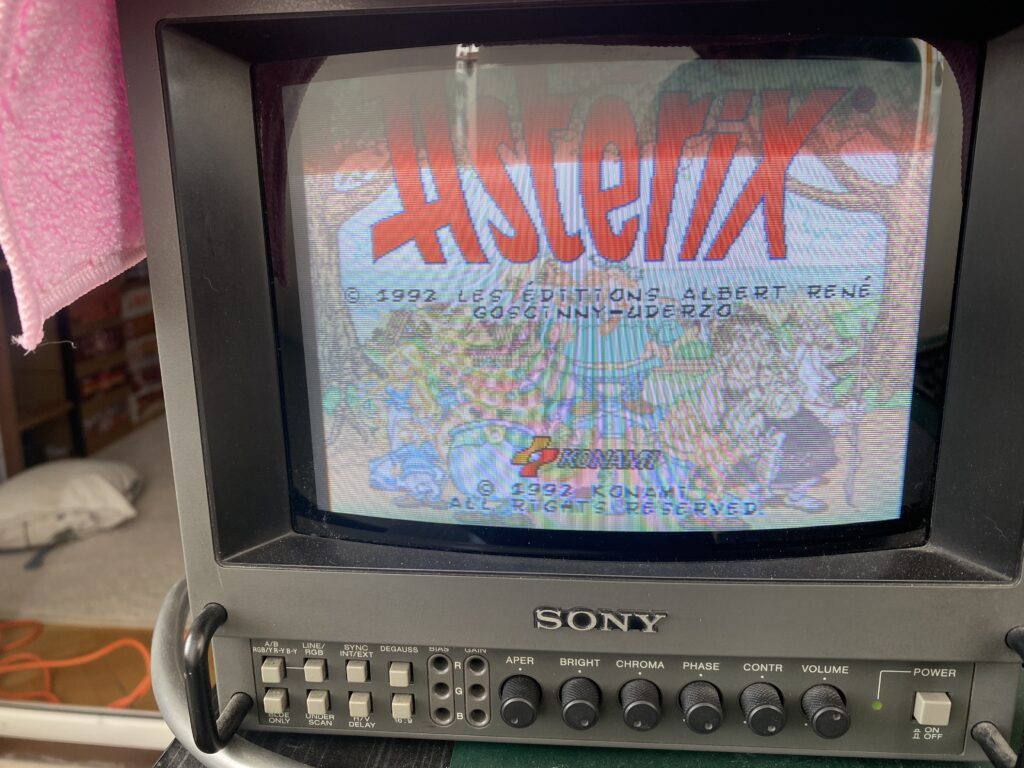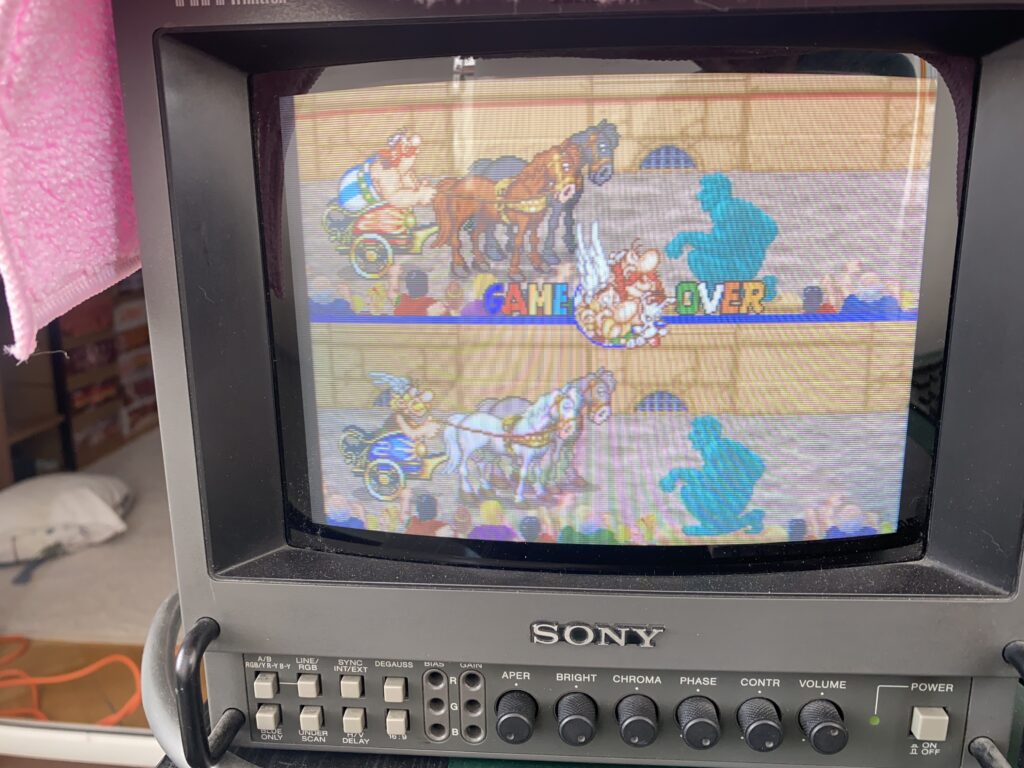Hello everyone, this time I have a Konami Asterix board that I got from the Arcade Museum forums.
I bought it as non-working “error with 2 chips” at an affordable price.
This is the board:
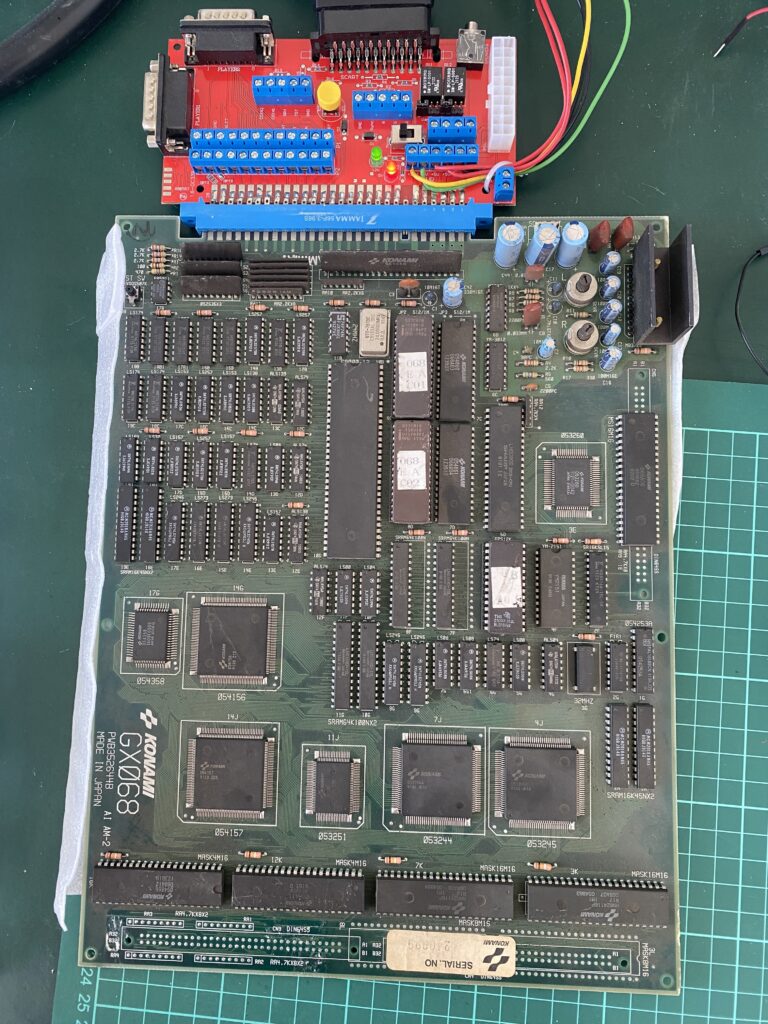
I immediately attached it to my JAMMA Test Rig and powered it up.

Indeed, we see 2 defective chips on the board’s ROM Check screen – 2F and 5F.
When examining the board, we see that 2F is a RAM chip while 5F is a ROM chip.
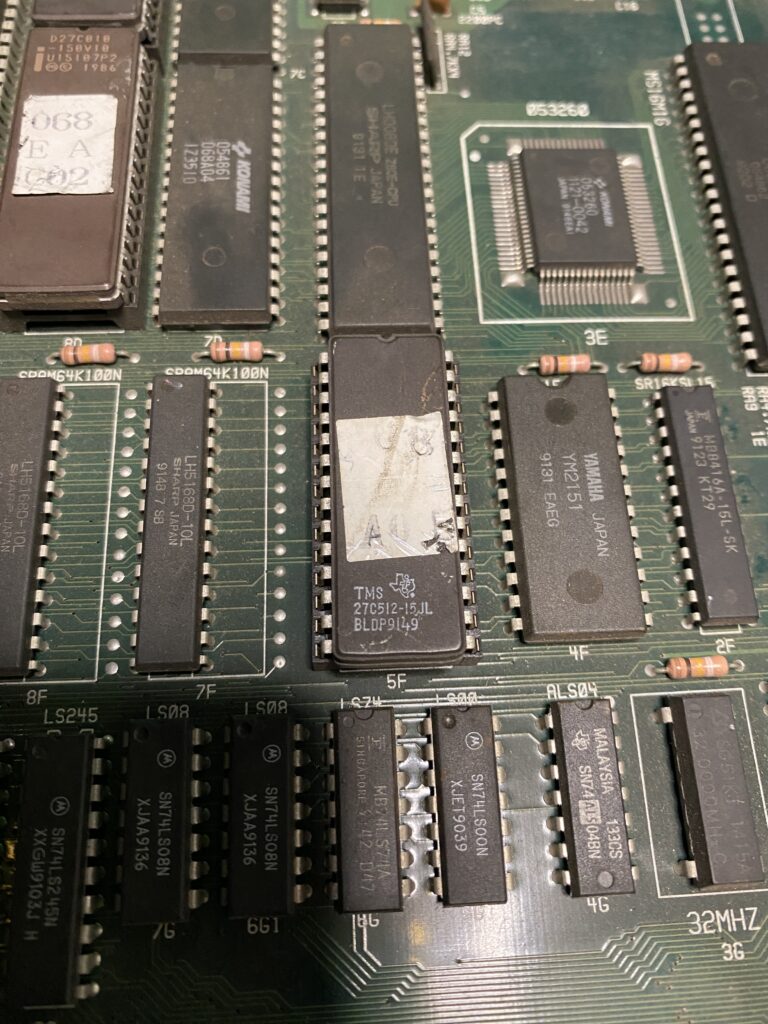
The 5F EPROM (TMS27C512) is already socketed, so let’s dump it and compare it with MAME via the ROMIdent site.


The ROM looks fine and matches what it should be. For good measure though, I’ll rewrite the dump back to the EPROM.



Then, while I’m at it, I’ll write the MAME equivalent dump file 068_a05.5f to another EPROM (W27C512) that I’m sure is good, so that we can try both.



First, I’ll put the old ROM back in and try it out.

Let me give you some information if you try a similar experiment. With some Konami boards, if you change ROM chips, the system might not detect it. For example, when switching from a 2P ROM to 4P ROM, or switching to a different language ROM.
If this occurs, hold down the TEST SW button while powering on the board. You should see an EEPROM Initialization message.



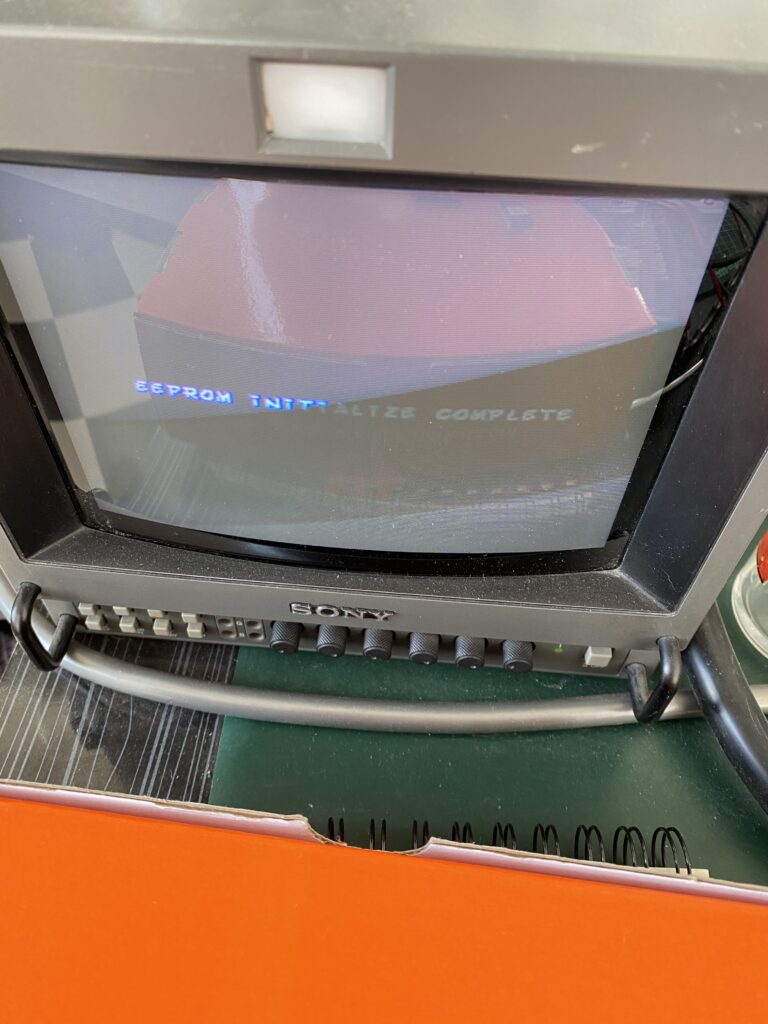
After the EEPROM reinitializes, it goes into the normal boot routine. Let’s see if 5F is fixed.


Not yet! Let’s try the new EPROM I wrote in case the old part is faulty.


It’s still not fixed. For now, let’s leave all this aside and deal with the RAM. Maybe problematic RAM is also causing problems accessing the ROM.
I bought it as non-working “error with 2 chips” at an affordable price.
This is the board:

I immediately attached it to my JAMMA Test Rig and powered it up.

Indeed, we see 2 defective chips on the board’s ROM Check screen – 2F and 5F.
When examining the board, we see that 2F is a RAM chip while 5F is a ROM chip.

The 5F EPROM (TMS27C512) is already socketed, so let’s dump it and compare it with MAME via the ROMIdent site.


The ROM looks fine and matches what it should be. For good measure though, I’ll rewrite the dump back to the EPROM.



Then, while I’m at it, I’ll write the MAME equivalent dump file 068_a05.5f to another EPROM (W27C512) that I’m sure is good, so that we can try both.



First, I’ll put the old ROM back in and try it out.

Let me give you some information if you try a similar experiment. With some Konami boards, if you change ROM chips, the system might not detect it. For example, when switching from a 2P ROM to 4P ROM, or switching to a different language ROM.
If this occurs, hold down the TEST SW button while powering on the board. You should see an EEPROM Initialization message.




After the EEPROM reinitializes, it goes into the normal boot routine. Let’s see if 5F is fixed.


Not yet! Let’s try the new EPROM I wrote in case the old part is faulty.


It’s still not fixed. For now, let’s leave all this aside and deal with the RAM. Maybe problematic RAM is also causing problems accessing the ROM.


